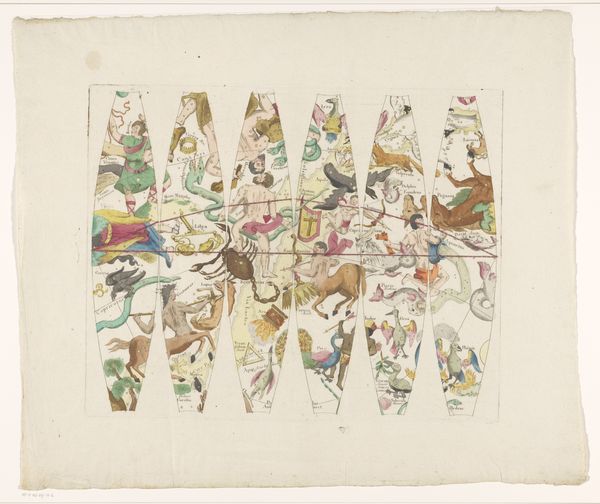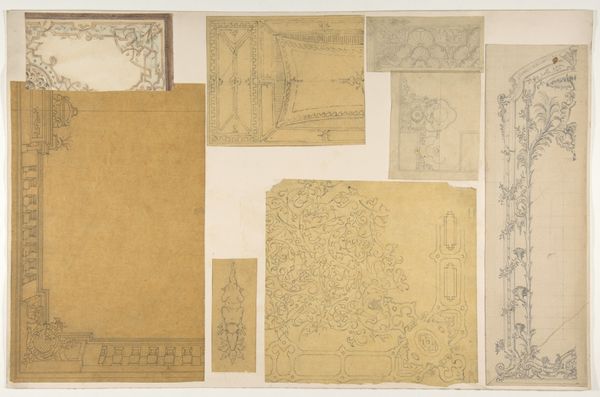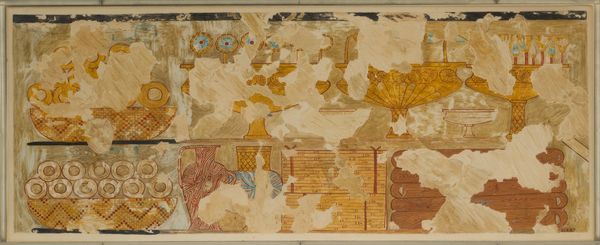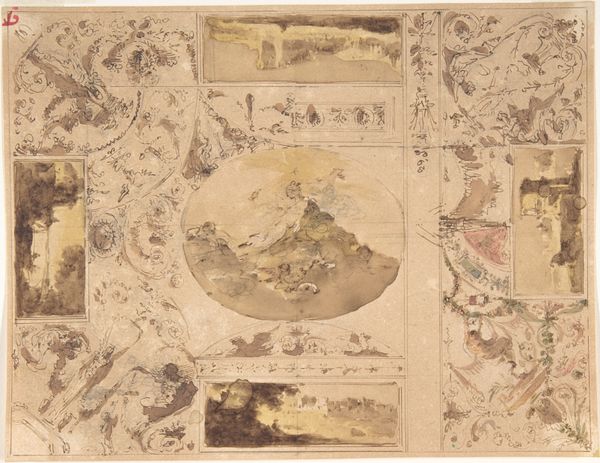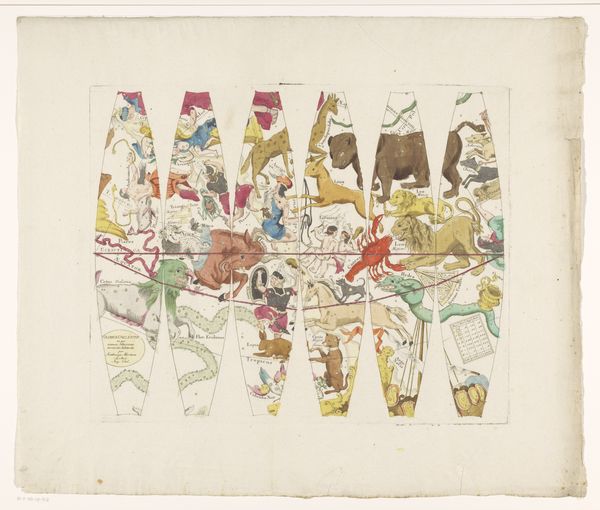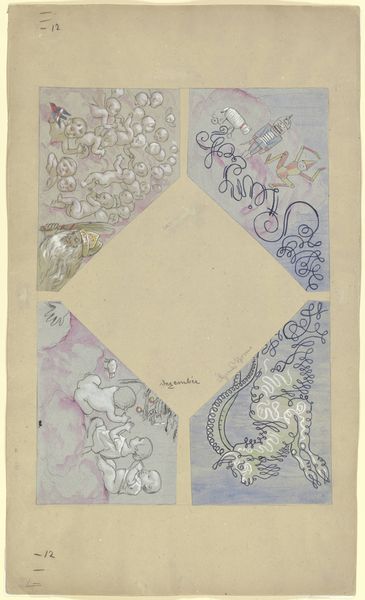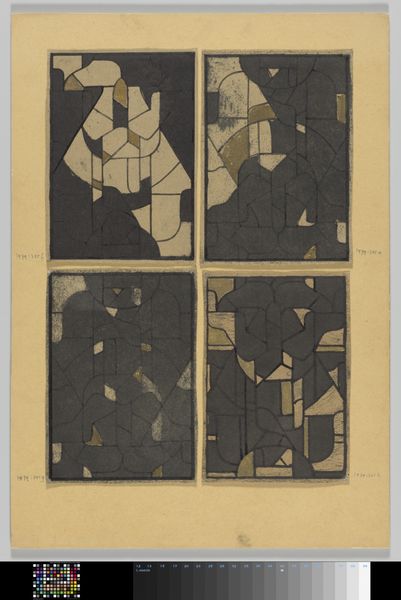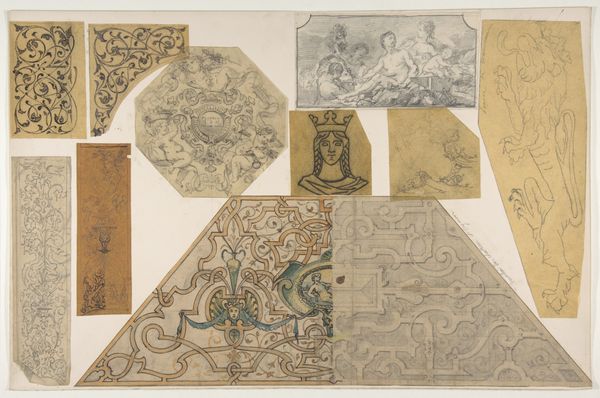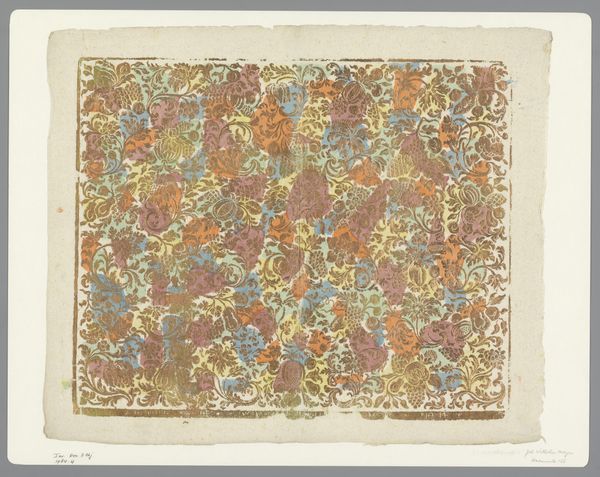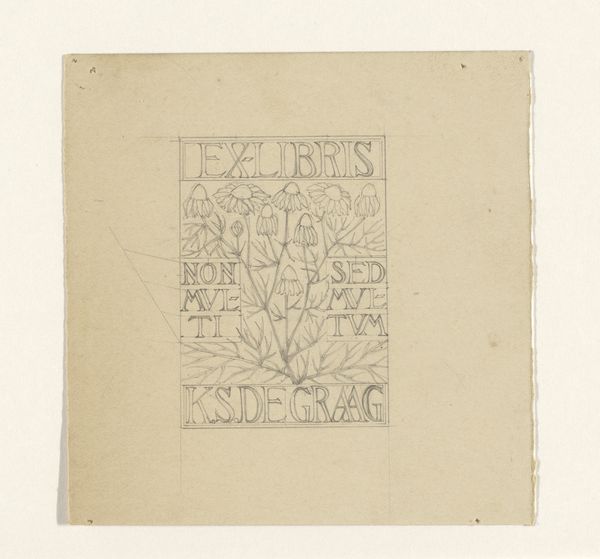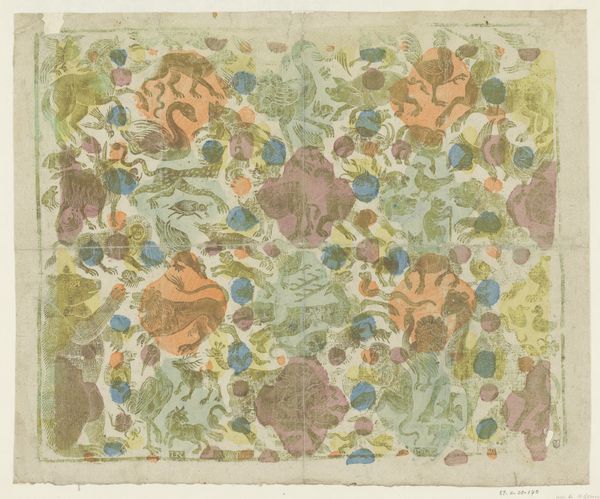
Dimensions: height 647 mm, width 246 mm, height 162 mm, width 246 mm, height 162 mm, width 246 mm
Copyright: Rijks Museum: Open Domain
Editor: This is "Twee ontwerpen voor tapijten met oud Hollandse taferelen," or "Two designs for carpets with old Dutch scenes," by Leo Gestel, made around 1928 using watercolor, colored pencil, and ink on paper. It feels quite dreamlike, particularly with the figures partially obscured. What symbols or cultural references stand out to you? Curator: It's fascinating how Gestel uses familiar symbols – windmills, figures in traditional Dutch garb, horses – yet fragments them, creating a sense of distorted memory. Look at how the right design appears almost like an overlaid palimpsest. Consider, too, how the Arts and Crafts movement, from which Gestel draws, often looked back to idealized folk traditions, mythologizing the past. The textile is no accident. We create shared visual languages through crafted materials, embedded in our lived experience. What might Gestel be suggesting with his obscured figuration? Editor: Perhaps he's showing the past as something always just out of reach, never fully graspable? Curator: Precisely. And how the familiar, through stylization and fragmentation, can become defamiliarized, prompting a new consideration of cultural identity. Notice the geometric structure even in the more abstract design; it roots us, no? Editor: I see that now. So even in distorting the images, he retains a sense of order and cultural memory? Curator: Exactly. And the very act of designing a tapestry connects these intimate scenes with large collective narratives. It pulls the tradition into our own present moment, through acts of daily living. Editor: That's really changed how I see the piece. Thank you! Curator: My pleasure. The power of iconography is in how it allows us to hold past and present together.
Comments
No comments
Be the first to comment and join the conversation on the ultimate creative platform.

